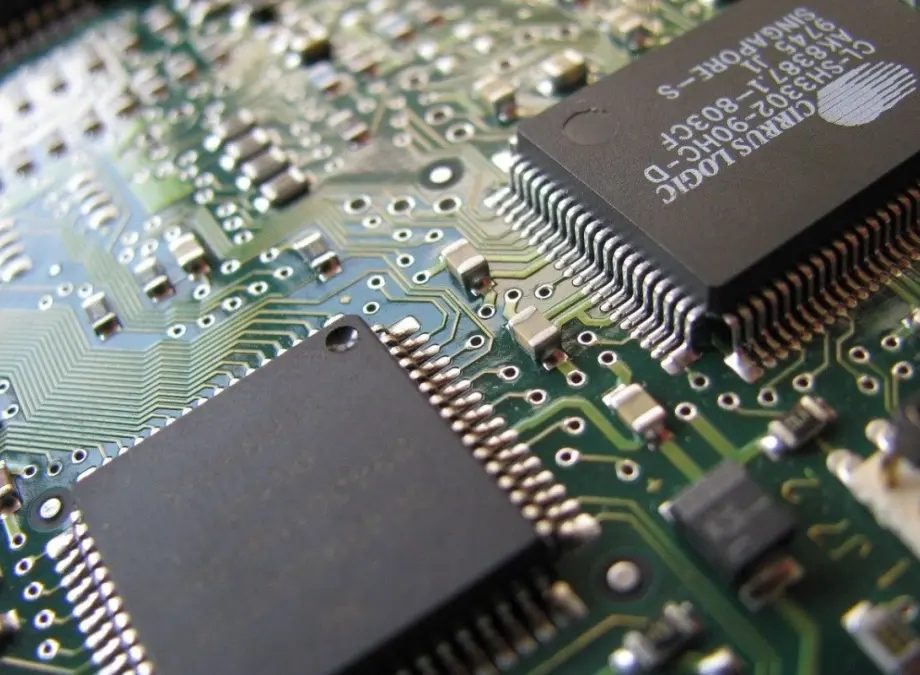Japan and India’s Strategic Shift: Legacy Semiconductor, LCD, and Battery Production Moves to India
In a move that signals a major realignment of global technology supply chains, Japan and India are advancing plans to transfer production of legacy semiconductor chips, LCD screens, and batteries from Japan to India. This initiative, targeting mature manufacturing technologies rather than the latest cutting-edge processes, is designed to reduce dependence on Chinese manufacturing, bolster economic security, and position both countries as key players in the evolving global semiconductor landscape.
- Japan and India’s Strategic Shift: Legacy Semiconductor, LCD, and Battery Production Moves to India
- Why Shift Legacy Production? Understanding the Strategic Rationale
- Inside the Japan-India Technology Transfer Plan
- Global Supply Chains in Flux: The Broader Industry Context
- Technology Transfer and Intellectual Property: Safeguarding the Future
- Implications for the Global Semiconductor Race
- In Summary
The plan, developed by the Japan External Trade Organization (JETRO) and the Confederation of Indian Industry, is set to be unveiled during Indian Prime Minister Narendra Modi’s visit to Japan for a summit with his counterpart Shigeru Ishiba. The timing underscores the growing urgency among democracies to diversify technology supply chains amid rising geopolitical tensions and supply chain disruptions.
Why Shift Legacy Production? Understanding the Strategic Rationale
Legacy semiconductors—chips manufactured using mature, well-established processes—are the backbone of countless everyday technologies. They power voltage control systems in electric vehicles, inverters for energy-efficient appliances, and industrial equipment. While not as headline-grabbing as the latest 2-nanometer chips used in smartphones or AI applications, these older chips are critical for the functioning of global industries.
Japan, once a semiconductor powerhouse with a 50 percent share of the global market in the 1980s, has seen its dominance wane due to US-imposed export restrictions, fierce price competition from China, and the rise of specialized chipmakers in Taiwan and South Korea. Today, Japan retains significant strengths in materials, chemicals, and manufacturing equipment, but faces stiff competition in mass production of legacy chips from low-cost Chinese manufacturers.
By shifting legacy production to India, Japan aims to maintain competitiveness in these markets, leverage India’s cost-effective workforce, and ensure that critical manufacturing capacity does not fall entirely under Chinese control. For India, the partnership is a leap toward self-reliance in electronics manufacturing, reducing its heavy dependence on imports from China for core components.
Economic Security and Geopolitical Context
This collaboration is not just about economics—it is deeply entwined with national security and geopolitics. The COVID-19 pandemic and the US-China tech rivalry exposed the vulnerabilities of concentrated supply chains. The US, Japan, and their allies have since prioritized building resilient, diversified technology ecosystems. India, as a member of the Quadrilateral Security Dialogue (QUAD) alongside the US, Japan, and Australia, is seen as a pivotal partner in securing the Indo-Pacific’s semiconductor supply chain.
Japan’s move also serves to strengthen ties with India and offer an alternative to closer alignment with China, especially as India navigates complex trade relationships, including new US tariffs on Indian goods.
Inside the Japan-India Technology Transfer Plan
The plan focuses on transferring production of goods that are losing capacity in Japan due to competition from low-priced Chinese products. The scope extends beyond semiconductors to include:
- Liquid crystal displays (LCDs)
- Solar power equipment
- Storage batteries
- Compressors and other industrial components
Japanese companies are already acting on the plan. For example, a Japanese storage battery manufacturer is set to sign a memorandum of understanding with an Indian partner, and a Japanese electrical machinery maker is building a compressor plant in Tamil Nadu. These projects are technically and financially straightforward, making them attractive for Japanese firms seeking to remain viable in the face of Chinese competition.
India, for its part, is preparing to adopt legislation similar to Japan’s to prevent technology leakage and protect intellectual property—key concerns in high-tech manufacturing.
India’s Semiconductor Ambitions: From Import Reliance to Manufacturing Hub
India’s electronics industry has long relied on imports for core semiconductor components, particularly from China. Prime Minister Modi’s “Make in India” initiative, launched in 2014, aims to transform the country into a global manufacturing hub. The government has committed nearly INR 629 billion (out of an earmarked 650 billion) to semiconductor production incentives, supporting both domestic and foreign investors.
Major players like Tata Electronics, Foxconn, HCL, Micron Technology, and others are investing in new fabrication and assembly plants across India. The government is also modernizing existing infrastructure, such as the Semiconductor Laboratory in Mohali, and supporting startups through the Design-Linked Incentive Scheme. The first domestically produced chips are expected by the end of 2025.
Global Supply Chains in Flux: The Broader Industry Context
The Japan-India partnership is part of a wider trend of supply chain diversification. Over the past decade, rising labor costs and regulatory uncertainties in China have prompted foreign companies to seek alternative manufacturing bases. India’s large talent pool, cost advantages, and government incentives make it an increasingly attractive destination.
However, India faces stiff competition from countries like Vietnam, which have been more successful in attracting foreign manufacturing investment due to streamlined regulations and business-friendly environments. As The Washington Post notes, India’s red tape and unpredictable policies have sometimes deterred global companies, though recent reforms aim to address these challenges.
Despite these hurdles, India’s strategic location in the Indo-Pacific and its participation in the QUAD make it a natural partner for countries seeking to reduce dependence on China. The COVID-19 pandemic underscored the risks of overconcentration, and the semiconductor industry—often described as the “new oil” of the digital age—has become a focal point for national security and economic policy.
Japan’s Semiconductor Revival: Lessons and Limitations
Japan’s renewed focus on semiconductors is part of a broader industrial revival strategy. The Ministry of Economy, Trade and Industry (METI) has designated semiconductors as a national project, approving $7.7 billion in funding to bolster domestic manufacturing. Projects like Rapidus, which recently achieved pilot production of advanced 2-nanometer chips, showcase Japan’s ambition to regain a significant position in the global chip market.
Yet, Japan’s most advanced factories still lag behind industry leaders like Samsung and TSMC by nearly a decade. The country remains competitive in areas such as NAND memory, power semiconductors, microcontrollers, and CMOS image sensors, but has largely exited the DRAM market. By collaborating with India on legacy technologies, Japan can focus its domestic resources on next-generation innovation while ensuring that mature manufacturing capacity remains within friendly supply chains.
Technology Transfer and Intellectual Property: Safeguarding the Future
One of the critical aspects of the Japan-India plan is the emphasis on protecting intellectual property and preventing technology leakage. India will adopt legislation modeled on Japan’s strict controls, ensuring that transferred technologies are safeguarded against unauthorized use or export. This is especially important given the dual-use nature of many semiconductor technologies, which have both civilian and military applications.
Such measures are designed to reassure Japanese firms and their government that their investments and know-how will be secure in India, paving the way for deeper collaboration in the future.
Talent Development and Ecosystem Building
The memorandum between Japan and India covers not only manufacturing but also semiconductor design, equipment research, and talent development. India’s strong human resources in chip design are seen as a major asset, and Japanese expertise in manufacturing infrastructure will help accelerate the development of a robust domestic ecosystem.
Collaborations with global technology firms such as Bosch, Renesas, and Powerchip Semiconductor Manufacturing Corporation are already strengthening India’s capabilities in chip design, advanced packaging, and manufacturing. The government’s Design-Linked Incentive Scheme supports startups and research in emerging areas like 2D materials for next-generation chips.
Implications for the Global Semiconductor Race
The global semiconductor industry is undergoing profound changes. TSMC continues to dominate advanced chip manufacturing, but India’s emergence as a player in mature node chips is reshaping the map. As Western nations face delays and cost overruns in their own chip projects, Asia—led by Taiwan, South Korea, Japan, and now India—remains at the forefront of manufacturing capacity.
India’s semiconductor market is projected to reach $63 billion by 2026. While it may take years for India to match the capabilities of Taiwan or South Korea, its focus on mature node chips is well-suited to industries like automotive, telecom, and consumer electronics, where reliability and cost are paramount.
Major international companies, including Micron and Applied Materials, have announced significant investments in India, signaling growing confidence in the country’s potential. As global supply chain disruptions and geopolitical tensions persist, India’s role as a trusted partner in semiconductor manufacturing and design is set to expand.
Challenges and Opportunities Ahead
Despite the optimism, challenges remain. India must continue to streamline regulations, improve infrastructure, and foster a business environment that attracts and retains foreign investment. The experience of companies like Apple, which has shifted some assembly to India but retains most high-value component manufacturing in China, illustrates the complexity of moving entire supply chains.
Nonetheless, the Japan-India partnership represents a significant step toward a more diversified, resilient, and secure global technology ecosystem. By combining Japanese expertise with Indian cost advantages and talent, the two countries are laying the groundwork for a new era in electronics manufacturing.
In Summary
- Japan and India are moving forward with plans to shift legacy semiconductor, LCD, and battery production from Japan to India, aiming to reduce dependence on China and strengthen economic security.
- The initiative targets mature manufacturing technologies critical for industries like automotive and consumer electronics, not the latest cutting-edge chips.
- The partnership is part of a broader trend of supply chain diversification, driven by geopolitical tensions, the COVID-19 pandemic, and the need for resilient technology ecosystems.
- India’s government is offering substantial incentives and modernizing infrastructure to attract semiconductor investment, with the first domestically produced chips expected by 2025.
- Japan’s strategy allows it to focus on next-generation innovation while ensuring legacy manufacturing remains within friendly supply chains.
- Both countries are emphasizing intellectual property protection, talent development, and ecosystem building as part of the collaboration.
- While challenges remain, the Japan-India partnership positions both nations as key players in the evolving global semiconductor industry.












